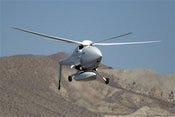Lt. Gen. Carroll Pollett, Defense Information Systems Agency director, says agility, reliability, and security key to the $8 billion-a-year agency's success.

| |
| |
Defense Information Systems Agency director Lt. Gen. Carroll Pollett hits a number of keywords -- agility, reliability, security -- when addressing his vision for the combat support agency, which provides IT and communications support to the rest of the military.
With three stars emblazoning his uniform, Pollett is one of the highest-ranking officers in military IT. His agency has an $8.3 billion budget and more than 7,000 employees -- civilians as well as soldiers from all branches of military -- spread out over 25 states and 7 countries, with the largest concentration right around Washington, D.C.
Currently, DISA is in the midst of one of the biggest shifts in its recent history, one which will see 4,300 workers move next year from DISA's current headquarters in Arlington, Va., 25 miles northeast to Fort Meade, Md., as part of the military's Base Realignment and Closure process. In an interview last Wednesday after giving a speech at DISA's Customer and Partnership Conference, Pollett said that he's told DISA's workforce that the move is his number one priority.
"We've got to look at this as an opportunity," he said. "People will say it's only 25 miles, but most people live south or west of the Beltway, and that can quickly [become a problem]." To make the move easier, the government is helping to pay costs for both civilians and members of the military.
In terms of opportunity, in concert with the move, DISA also is making changes to the way it trains employees, for example creating an expanded internship program that includes opportunities for older employees, adding incentives, and doing more outreach to local schools like the University of Maryland.
The pace of technological change is an opportunity for DISA, which has become one of the government leaders in cloud computing, to continue improving its standing as a support agency for the rest of the military. "We've got to be agile and flexible," Pollett said. "The challenge is this rapid change, this asymmetric environment, and trying to keep up with acquisition to give technology to the field so they have the latest tech to work with." Pollett looks at shared enterprise services and strategies as a way to increase that agility. As an example, he pointed to work with other service agencies' CIOs on a common strategy for enterprise infrastructure, the possibility of Department of Defense-wide e-mail, and enterprise identity management and content delivery services.
He also clearly sees cloud computing as a way to increase flexibility and agility. "It certainly allows you to move toward leveraging technology and processing speed without having to build the network and the infrastructure yourself," he said. "It also gets back to collaborating so you don't have to re-invent the answer." DISA's private cloud is among the most advanced in government, and the agency has a number of cloud computing efforts in the works.
With the network a ubiquitous part of soldiers' and civilian employees' lives, business continuity and network access are also key concerns for Pollett. "The user doesn't care about the enterprise, all they want to do is plug in, and they want it now and they want it their way," Pollett said. "The user doesn't care about our problems with the architecture. He expects us to solve it."
Several years ago, a severed fiber optic cable in the Mediterranean Sea left networks down and DISA scrambling. However, since then, DISA has significantly increased its network capacity and diversity around the globe. It's increased capacity more than 100% in Afghanistan over the past few months. "We focus hard at every choke point in the world," Pollett said. That increased focus on continuity is clearly paying dividends: despite 28 fiber cuts (none of them intentional) in the Middle East over the last 30 days, there's been not so much as a blip in network access there.
Of course, one of the keys to uptime is cybersecurity, which is also undergoing a facelift at DISA. Whereas security in the past was a major component of Pollett's Joint Task Force for Global Network Operations (JTF-GNO), that group will be deactivated September 7 as the new U.S. Cyber Command continues to expand its efforts.
"CyberCom will defend and DISA will engineer," Pollett said. "We have a very tight relationship with Cyber Command to operate and ensure their capability to do the defensive measures they need to do." For example, DISA has linked its operations centers to Cyber Command operations centers, and has DISA engineers working at Cyber Command. DISA will now be subservient to Cyber Command on cybersecurity issues, but, Pollett said, DISA and Cyber Command "recognize that we have to share a common operating picture for how we're doing things across the domain."
About the Author(s)
You May Also Like









